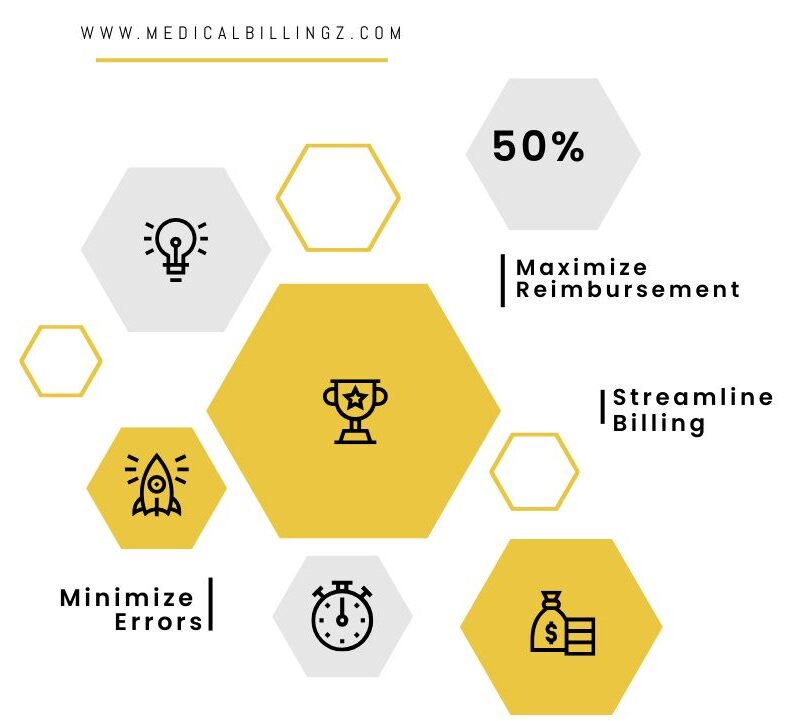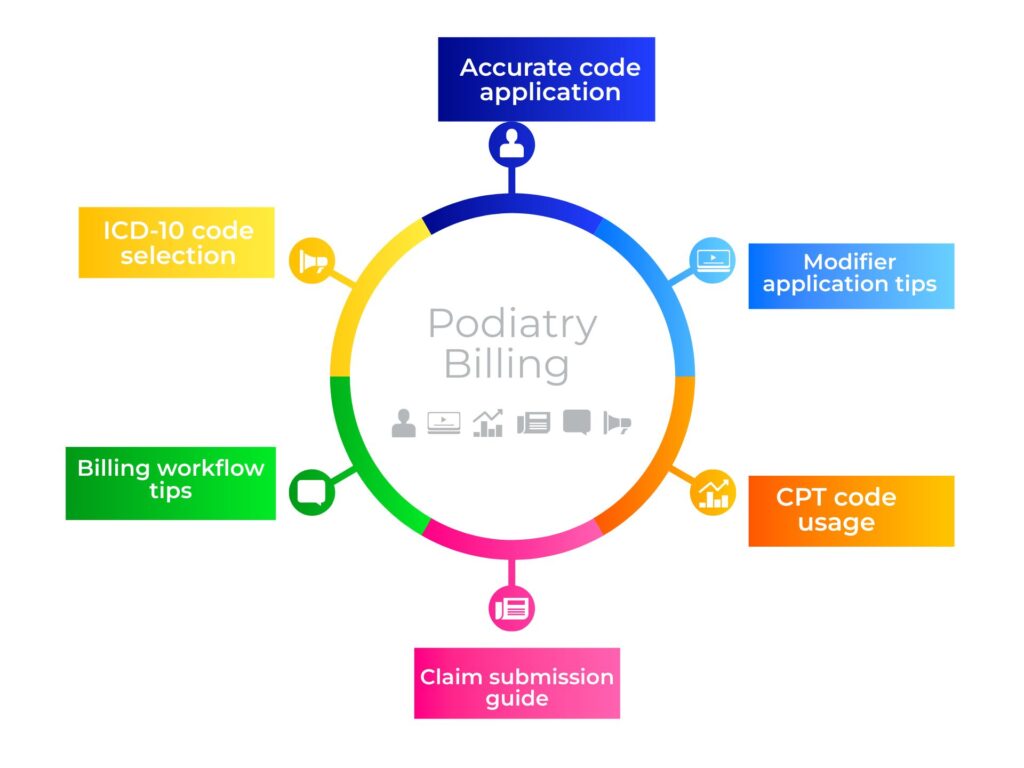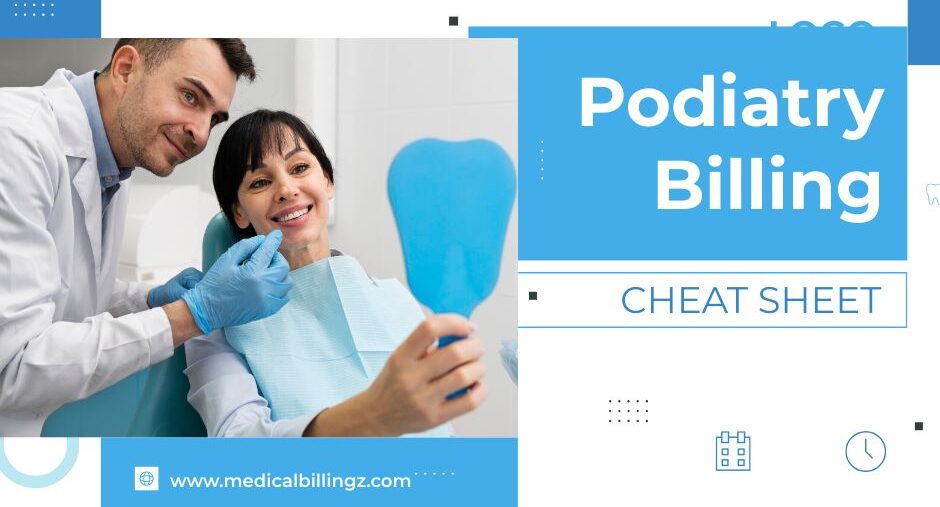Healthcare providers and billing specialists may find Podiatry Billing Cheat Sheet to be a challenging process, but with the right cheat sheet, the process can be made easier.
The specialty of podiatry is the diagnosis and treatment of disorders pertaining to the foot, ankle, and lower limbs. To guarantee that healthcare providers are paid fairly for their services, podiatry bills must be completed correctly.
The Value of Podiatry Billing Cheat Sheet
Maintaining compliance with healthcare regulations, minimizing claim denials, and ensuring timely payments all depend on accurate billing. Inaccurate invoicing may cause delays, lower income, and even legal problems.
Crucial Elements of Foot Care Billing
a. Codes for ICD-10 All diagnoses, symptoms, and procedures are coded using ICD-10 codes. These codes are crucial in podiatry to record the particular conditions that are being treated.

b. CPT Numbers The medical, surgical, and diagnostic services rendered are denoted by CPT (Current Procedural Terminology) codes. These codes are essential in Podiatry Billing Cheat Sheet to accurately reflect the intricacy of the procedures carried out.
c. Adjustments Modifiers are employed to offer more details about the services rendered. They are essential for preventing claim denials and can show whether a service was modified in any way, such as being bilateral or repeated.
ICD-10 Codes Often Used in Podiatry
Several ICD-10 codes are commonly used in podiatry to document different conditions. Comprehending these codes is essential for precise invoicing:
- M77.9: Unspecified encesopathy
- L97.4: Chronic non-pressure ulcers of the midfoot and heel
- M72.2: Fibrosis of the plantar fascia
- M79.673: Unspecified pain in the foot and toes
- I70.201: Intermittent claudication due to atherosclerosis of native arteries in the extremities
Key CPT codes for Podiatry Billing Cheat Sheet
The following are some of the CPT codes that are most frequently used in podiatry:
- 11055: Paring or cutting of a single, benign hyperkeratotic lesion (such as a corn or callus).
- 11720: Nail bridling (six or more)
- 99203: Visiting an office or other outpatient facility to assess and care for a new patient
- 28160: Resection of the interphalangeal joint or hemiphalangectomy, each toe
- 97597: Debridement, open wound, with instructions for continued care, topical application(s), and wound assessment
Significant Changes to Podiatry Billing Cheat Sheet
a. Change 25 shows that the same doctor performed a sizable, separately identifiable evaluation and management (E/M) service on the same day as the procedure.
Want to discover how to code podiatry services correctly?
b. Adjustment 59 used to identify services or procedures that are appropriate in the given situation but are not typically reported together.
c. Adjust Q7 shows that the patient has at least one class A finding (integral skeletal portion, non-traumatic foot amputation, etc.).
d. Modifier Q8 denotes the presence of two class B findings in the patient (e.g., claudication, absence of posterior tibial pulse).
e. Modifier Q9 denotes the presence of three class C findings in the patient (e.g., trophic changes such as absent hair or thin skin).
The Significance of Records in Podiatry Billing Cheat Sheet
To ensure successful Podiatry Billing Cheat Sheet, documentation must be precise and comprehensive. The patient’s condition, the services rendered, and the treatment’s medical necessity should all be expressly stated in the documentation. This comprises:
Patient History:
Recording the medical, surgical, and social history of the patient that is pertinent to the condition affecting the foot or lower extremities.
Physical Examination:
Detailed notes on the affected area’s physical examination, including any anomalies discovered.
Treatment Plan:
In the event of an audit, clear records are provided, denials are less likely, and the billed services are supported by proper documentation.
Best Practices for Podiatry Billing Cheat Sheet:
Providing an overview of the suggested course of action, including any necessary follow-up care and procedures.
a. Confirm Patient Insurance Make sure to confirm the patient’s insurance before administering any services. This entails verifying prior authorizations, copayments, and coverage.

b. Use the highest level of specificity when coding Use the most precise CPT and ICD-10 codes that are available at all times. This guarantees full reimbursement and lessens the possibility of claim rejections.
c. Examine and Update Codes Frequently Each year, podiatry codes may alter. To stay in compliance with the most recent regulations, review and update your practice’s billing codes on a regular basis.
d. Make Use of the Right Modifiers It’s critical to use the appropriate modifiers to prevent denials. Applying modifiers carefully is important because improper use can cause problems with compliance.
e. File Electronically for Claims Electronically submitting claims speeds up the process, lowers error rates, and expedites reimbursement.
Curious how to avoid common billing errors in podiatry billing cheat sheet?
Typical Errors in Podiatry Billing Cheat Sheet and How to Avoid Them
a. Wrong Coding Denying a claim may result from using out-of-date or inaccurate codes. Regularly train your billing staff and keep up with the most recent coding changes to prevent this.
b. Absence of Modifiers Neglecting essential modifications may lead to underpayment or rejections. Before submitting a claim, make sure that all applicable modifiers have been applied.
c. Insufficient Records A common cause of claim denials is inadequate documentation. Make sure all of your documentation backs up the rendered services that were invoiced.
d. Not Getting Prior Authorization Claims denials may occur if pre-authorization is not obtained for specific procedures. Before using a service, always make sure it requires authorization.
Sample Podiatry Billing Cheat Sheet
Below is a quick reference table that summarizes some of the key codes and modifiers used in podiatry billing:
| Code Type | Code | Description |
| ICD-10 | M77.9 | Enthesopathy, unspecified |
| CPT | 11055 | Paring or cutting of benign hyperkeratotic lesion |
| Modifier | 25 | Significant, separately identifiable E/M service on the same day |
Conclusion
Podiatry billing is a specialty field that necessitates a thorough knowledge of insurance requirements, documentation guidelines, and medical coding. Because foot and ankle conditions are unique and frequently involve a variety of diagnoses, procedures, and treatment plans, Podiatry Billing Cheat Sheet can be complicated.
In order to ensure that every service rendered is fully justified through appropriate documentation, correct coding, and the appropriate use of modifiers, accurate billing involves more than just filing claims.
The effectiveness and precision of a podiatry practice’s billing procedures are critical to its success. The financial stability of a practice may be strained by errors like improper coding, missing modifiers, or insufficient documentation, which can result in claim denials, delayed payments, and even possible audits.
Furthermore, with yearly updates to CPT and ICD-10 codes, the regulatory landscape is continuously changing, necessitating that practices remain informed and adjust accordingly.
Error risk can be greatly decreased by putting best practices into practice, which include coding with the utmost specificity, regularly updating billing knowledge, and confirming insurance before treatment. Furthermore, being aware of typical billing errors in podiatry and knowing how to avoid them guarantees that claims are handled efficiently.
FAQs
In podiatry, what is the most frequent cause of claim denials?
Claims denials in podiatry are typically caused by inaccurate or lacking documentation. To avoid denials, it is imperative to make sure that all services have accurate coding and thorough documentation.
In podiatry, how can I prevent billing errors?
Use the appropriate modifiers, keep up with coding changes, provide regular training to your billing staff, and make sure that all services are thoroughly documented to prevent billing errors.
Why do modifiers matter when billing podiatrists?
Modifiers, such as stating that a service was performed bilaterally or in a different location, give the services billed additional context. They are necessary to guarantee correct reimbursement and prevent claim denials.
Does podiatry services always require pre-authorization?
Pre-authorization specifications differ depending on the procedure and the insurance company. It’s critical to confirm any services that might need pre-authorization with the patient’s insurance provider.
What is the frequency of updating Podiatry Billing Cheat Sheets?
To stay in compliance with the most recent regulations and to avoid using outdated codes, Podiatry Billing Cheat Sheet should be reviewed and updated on an annual basis.

